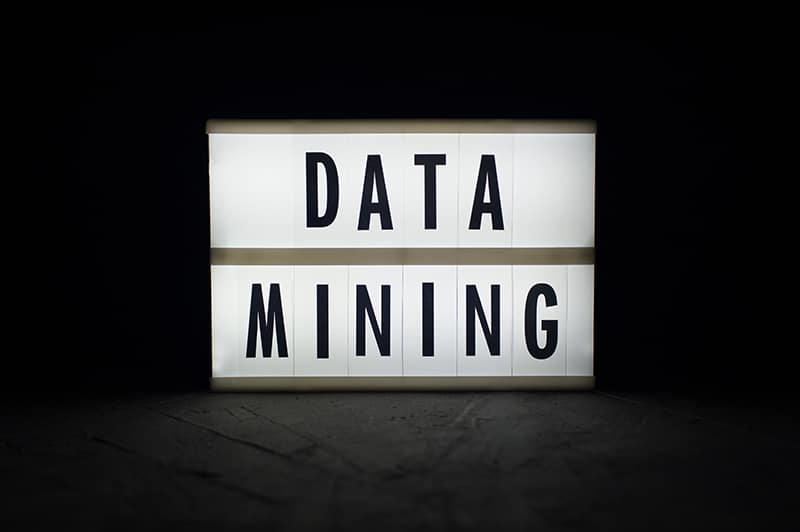Data mining stands as a powerful and widely adopted process in the business realm, where it plays a pivotal role in structuring extensive datasets into valuable and precise information. As businesses require managing an ever-expanding volume of data, the ability to extract meaningful insights has become a cornerstone of strategic decision-making. Data mining service providers empower organizations to uncover hidden patterns, correlations, and trends within their datasets, shedding light on customer behaviors, market dynamics, and operational efficiencies. This systematic procedure involves the analysis and exploration of data with the objective of discerning patterns and trends. By proficiently filtering through vast datasets, data mining becomes a valuable tool in uncovering and leveraging concealed business intelligence, providing organizations with actionable insights and a competitive edge.
From customer segmentation and targeted marketing to predictive analytics and risk management, data mining serves as a powerful tool for transforming raw data into actionable intelligence. As businesses navigate the complexities of the digital age, those adept at harnessing the potential of data mining are better positioned to make informed, data-driven decisions that drive success and innovation. Various data mining methods are employed to enhance accuracy and extract meaningful insights from vast datasets. These methods are crucial in uncovering patterns, trends, and knowledge from complex data structures.
Diverse Data Mining Approaches for Businesses
Several techniques are commonly used for improved accuracy in data mining:
Classification: Classification involves categorizing data into predefined classes or labels. Algorithms such as Decision Trees, Naive Bayes, and Support Vector Machines are commonly employed for accurate classification. Classification algorithms can be divided into two categories such as – Generative and Discriminative.
When it comes to fraud detection in banking, banks deploy classification models to identify potentially fraudulent transactions by categorizing them as “normal” or “suspicious.” It enhances security by quickly detecting and preventing fraudulent activities.
Clustering: Clustering is utilized to group similar data points based on inherent patterns. K-Means, hierarchical clustering, and DBSCAN are popular algorithms for clustering diverse datasets accurately.
For customer segmentation in marketing, retailers use clustering algorithms. It helps to group customers based on purchasing behavior, preferences, and demographics. The process enables targeted marketing strategies for different customer segments, improving the effectiveness of promotional campaigns.
Regression Analysis: Regression analysis aims to predict numerical values. Linear regression, polynomial regression, and logistic regression are methods used to model relationships between variables and forecast outcomes.
In the finance and investment sector, regression analysis helps in predicting stock prices based on historical data. This data mining approach can impact informed investment decisions, risk mitigation, and improved portfolio management.
Association Rule Mining: This method identifies patterns of association among variables. Apriori algorithm and FP-growth algorithm are commonly used for discovering interesting relationships in datasets.
For ecommerce product recommendations, online platforms analyze customer purchase histories to suggest products based on associations with items in their shopping carts or previous purchases. This approach enhances the user experience by providing personalized and relevant product recommendations.
Anomaly Detection: Anomaly detection identifies rare instances or outliers in a dataset. Isolation Forests, One-Class SVM, and clustering-based methods are effective for accurately spotting anomalies.
This approach is mainly used in the cybersecurity sector to detect unusual patterns in network traffic to identify potential security threats. It allows early detection of security breaches, prevention of cyberattacks, and protection of sensitive data.
Neural Networks: Deep learning techniques such as artificial neural networks, convolutional neural networks (CNNs), and recurrent neural networks (RNNs), are powerful for complex pattern recognition, making them suitable for tasks requiring high accuracy.
For the autonomous vehicles sector, neural networks are employed in self-driving cars to process data from sensors and cameras for real-time decision-making. It improves the safety and efficiency of autonomous vehicles by enabling them to navigate complex environments.
Ensemble Methods: Ensemble methods, including Random Forests and Gradient Boosting, combine the outputs of multiple models to improve accuracy and robustness.
Weather forecasting models often use ensemble methods to combine predictions from different meteorological models for more accurate and reliable forecasts. This improves the precision of weather predictions by considering multiple sources of information.
Dimensionality Reduction: Dimensionality reduction techniques such as Principal Component Analysis (PCA) and t-Distributed Stochastic Neighbor Embedding (t-SNE) help enhance accuracy by reducing the complexity of datasets while retaining essential information.
In speech recognition systems, dimensionality reduction techniques are applied to the feature vectors extracted from audio signals. This simplifies the data while preserving the information necessary for accurate recognition.
Text Mining and Natural Language Processing (NLP): Text mining and NLP methods are employed to extract insights from unstructured textual data. Techniques such as sentiment analysis, named entity recognition, and topic modeling contribute to improved accuracy in understanding and classifying text-based information.
For customer service and social media analysis, this approach is crucial in analyzing customer reviews to understand sentiment and preferences. Results include improved customer service, targeted marketing, and brand reputation management.
Time Series Analysis: Time series analysis methods, including Autoregressive Integrated Moving Average (ARIMA) and Long Short-Term Memory (LSTM) networks, are essential for accurate predictions and pattern recognition in temporal data.
Traders in the foreign exchange market use time series analysis to predict currency exchange rates based on historical data and market trends.
Collaborating with a dependable data conversion company enables organizations to seamlessly process data, assess risks, identify errors, and ensure data accuracy. The abundant data can be efficiently distilled into meaningful information. Employees relieved from the burdensome task of data entry can redirect their focus toward core activities, fostering enhanced efficiency. This translates into expedited decision-making processes, streamlined business operations, and ultimately, an upswing in productivity and revenue for businesses.








